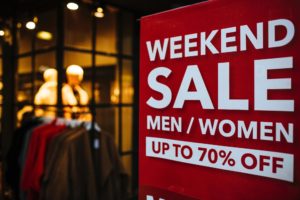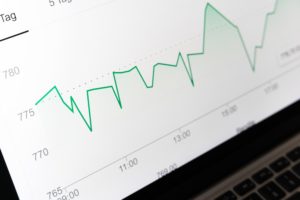The products and services you offer immediately give you a hint about what your target audience wants and needs. But it’s even more important to look deeper beneath the surface and identify the patterns and characteristics which connect those within your target audience. This is where the concept of a buyer persona comes into play, and we’ll help you identify them!
First we’ll cover the basics of what a buyer persona is and how to create one. Then we’ll look into some tips to use data and information already at your disposal that you may have overlooked. We’ll answer the questions of how many buyer personas you should have and how much you should prioritize them.
What are buyer personas?
A buyer persona is the fictional representation of your ideal customer. For example, a coffee shop might identify its primary buyer persona as a 26 year old woman who is single and looking for a calm place to take her midday coffee. This isn’t a persona simply taken out of thin air. It is a description that can be attributed to a good quantity of the customers of this coffee shop.
In order to accurately depict your buyer persona, you need to establish which characteristics define them. We’ll discuss these characteristics in detail but right at the start it’s important to dive into this process knowing that it’s different and unique for each business. It’s up to you to use the information below and apply to your own distinct context.
Gender can be a defining factor for one business’s buyer persona, for a specific clothing or cosmetics brand, for instance. On the other hand, it could be an entirely irrelevant factor for a certain supermarket or a gas station that has people of all ages as primary customers, in which case other socio-economic factors and location are more important. Finding the key characteristics that define your buyer persona is your task. The examples in the following paragraphs can be valuable hints for which criteria are relevant for your business in particular.
Map out your buyer persona
Age, gender, and occupation are excellent starting points. Other possible factors to use as guidelines are education level, marital status, children, household income, geographical location, etc. The physical location is particularly important with the concept of outdoor advertising in mind. It’s all about messaging at the right place and time. For that we need to be aware of a business’s surroundings and the people who pass by on a daily basis.
As you begin noting down these relevant characteristics, you’ll quickly notice that you can specify some factors more easily and in more detail than others. These are the ones you need to build your content around. If your buyer persona is anyone aged 15 and up, it’s likely that age and the pop culture associated with an age bracket won’t be a very important factor to base your content on.
In the world of coffee shops, imagine a buyer persona being any single woman aged 18-25 who drinks coffee daily after class or work, is very outgoing, and responds very well to discounts. Immediately you have a good idea for your next ad.
Let’s move over to the world of marketing to see another example. Here, if you’re selling advertising space, your buyer persona could be a young marketing director no older than 30, male or female, eager to prove themselves and find original marketing ideas for their business. With this individual in your mind, you can see how presenting your ad space as a creative canvas for marketing ideas can go a long way in persuading such a person.
Use the data you have at your disposal
If your business has been around for some time, you likely already have some sources of information at the ready. Social media is an excellent tool in this context. It allows you to not only see the demographics that identify your buyer persona but also see the interests of your followers.
While social media can be a powerful tool, your sales information is your true well of knowledge. Even if you’re unsatisfied with your sales at this point, paying attention to buyer characteristics can help you improve sales. If you see a spike in traffic at a certain time each day, or at a certain point within the week, see what causes it.
Imagine you own a cafe which also sells smoothies. Every other day at 2PM you notice a spike in orders of healthy smoothies. Deeper research may lead you to find that this spike is caused by a nearby gym class that takes place at this time. Adjusting your ads specifically to that time of day can bring in even more people. This can help keep this spike in traffic long term. As you now see a more specific buyer persona emerge, taking into account the age and gender of the corresponding customers, you can address them more easily. Why not throw in a special offer for gym members, or groups of three or more?
Understand the needs and motivations of your buyer persona
The aforementioned classifications are very important as they help you understand what motivates a typical customer of yours. Let’s apply them in the context of outdoor advertising in more detail
The style of your advertisement and the message you send changes depending on the buyer persona you have in mind. One persona could be an experienced ad buyer named Bob with 30+ years of experience. He makes decisions based on established numbers and his sense for the industry. In this instance, your content will revolve around numbers and sales data. When you speak to this persona, you’ll use numbers, statistics, and forecasts.
On the other hand, a much different buyer persona is Jenny, a 25 year old marketing assistant at a startup. She’s looking to buy advertising space for the first time. She cares less about the statistics, numbers, and ROI. She’s more interested in making people aware of her business and making a really cool ad. In this case you’ll do better by presenting your ad space as an opportunity to raise brand awareness and a canvas for creative messaging.
Can you think of another factor that would be very important to an OOH ad space buyer? As they themselves look to advertise to a specific buyer persona, you can help them out and point out the characteristics of the audiences exposed to the display in question. Most buyer personas will find this of value. But the key is to accurately assign the potential audience to the right buyer persona.
Prioritize your buyer personas
This final tip comes into effect once you’ve collected sufficient data to establish multiple buyer personas. Regarding the question of how many buyer personas you should have, know that one can be enough. But having multiple is also acceptable. Let’s recalling the previous example with the sales spike caused by gym goers. You can see how you can adjust your content to multiple buyer personas based on the time of day, as you know at which time your message will reach them.
While having multiple buyer personas is possible, it’s important to prioritize them. You want to appeal to the buyer personas which you primarily rely on to make a profit. Certainly, you would like to please anyone who makes a purchase with you. Some, however, make higher volume purchases than others and addressing them leads to more revenue. On the other hand it may well be that the low spenders have an untapped potential to become power purchasers once they are addressed right. Knowing which is what, will get you further. You want to draw in as many people as you can. Diluting your focus will not do you any favors.
In one of our recent articles we explained how your target audience perceives the content you create. Now you have at least a rough image of your buyer persona. So take a look at those guidelines and see how you can adapt your existing content. You can, of course, even create brand new content that will draw the attention you need.
Regardless of the number of buyer personas you have, digital signage software like OnSign TV can be a great asset to help you get the right content in front of the right person at the best time possible. That’s only some of its benefits, and you can explore all of them with a free trial, no strings attached or credit card required!











